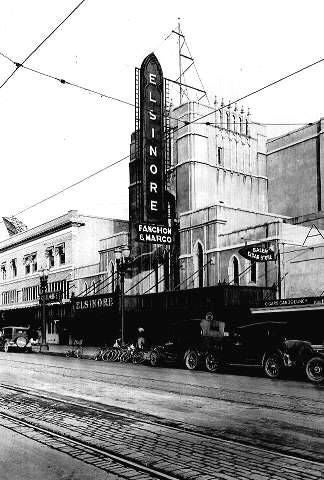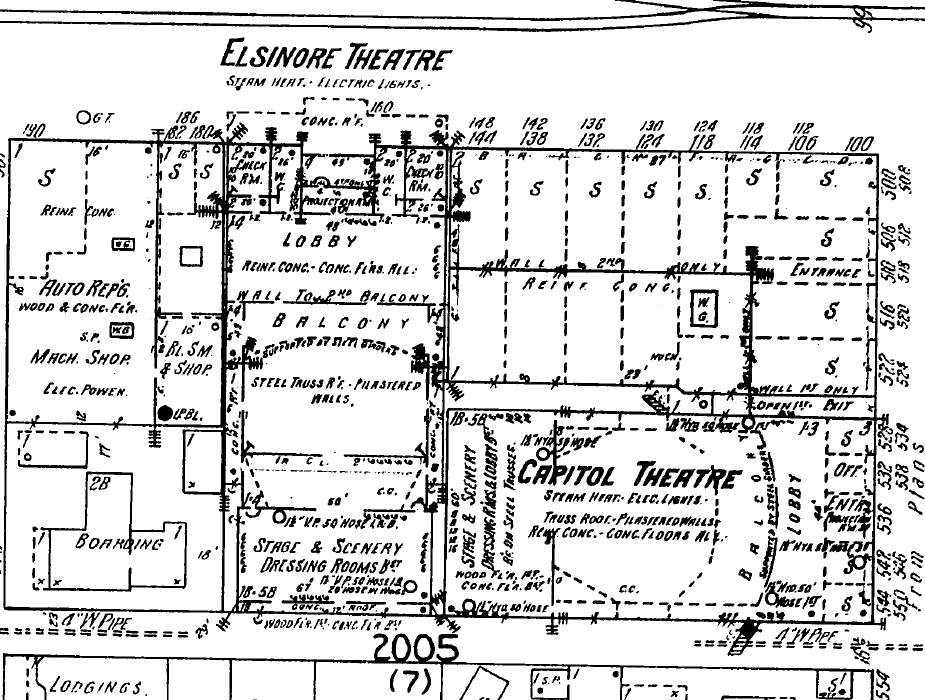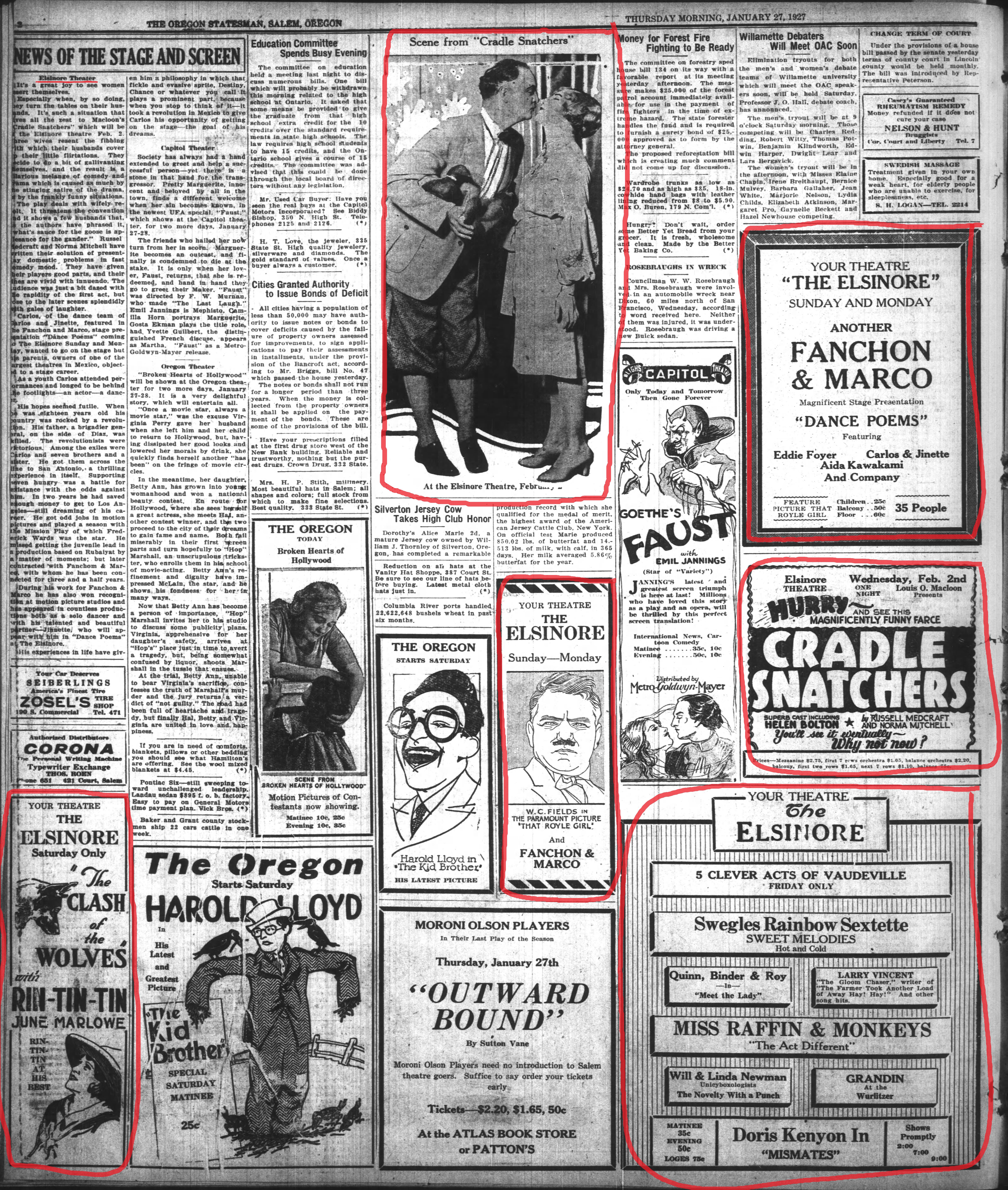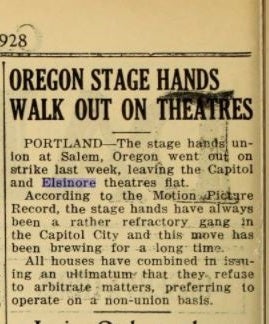The Elsinore remains open today, and as a person who calls Salem their hometown, I am honored to research and create this profile about the Elsinore. I know first hand how much this theater affects and proliferates the culture of the community of Salem. A theater can be more than just a location for screening movies, it can be a place where cherished memories are made. And I certainly have cherished memories of this theater.
The Elsinore theater was constructed in 1926 by Salem businessman George B. Guthrie. Guthrie was the owner and operator of the famous Salem theater the Oregon theater from 1912 and onward. He paired with architects Lawrence and Holford from Portland (4) to create one of Oregon's most beautiful theaters. It was designed to resemble the castle of Elsinore from Shakespeare's Hamlet play. The theater was constructed for standard theater practice, having a stage measuring at 32 x 63 feet in area, and a loft of over 60 feet in height. The Elsinore also has full dressing rooms for performers in the basement. Although the theater was specifically built for standard Broadway theater style performance, other forms of entertainment such as vaudeville, live orchestra, and films (2,5,6,7,8) were also very popular. In fact, throughout its existence and before the opening of Salem's modern mall style movie theaters, the Elsinore acted as one of Salem's main movie theaters. In an exhibition ad for the Elsinore from the Oregon Statesman newspaper on January 23, 1927 (7), there is specific text letting readers know this ad is not for a film. This ad shows how popular films were at the Elsinore in and around 1927. The Elsinore had a habit of advertising their films in the newspaper with vibrant art attached to every section. The ad for Mary Pickford's Sparrows has designs of Mary Pickford dancing, and children (5). The ad for Lon Chaney's While The City Sleeps has a beautiful background design and a detailed rendition of Lon Chaney's dramatic face (8). These advertisements stand out next to standard ads. It would not be too far of an assumption to assume that the theater managers of the Elsinore made a conscious effort to make their advertisements vibrant and detailed as a promotional strategy.
In 1927, the Elsinore and the Oregon theaters, both being owned by Mr. Guthrie, became part of West Coast Theaters, Inc., Guthrie remained the owner, however the theater would from then on, be run by West Coast Theaters (1). The theater kept its name, as the people of Salem came to know The Elsinore. A man by the name of Ralph Allen became the theater manager for both the Elsinore and the Oregon theaters. He was tested as a theater manager in Los Angeles by West Coast Theaters, Inc., and proved to be a good theater manager.



Due to the popularity and size of the Elsinore, it had the financial ability to promote their programs on multiple full page spreads. This allows for a lot of exposure because it limits the amount of competing theaters advertisements.

While the Elsinore theater seems to have had a great reputation among community members, the employees had a different view. At one point the stage hands walked out of the theater in protest.
As seen by this article, the issue is regarding workers' unions. Both the Elsinore and Bligh’s Capitol Theatre wanted to operate on a non-union basis.
